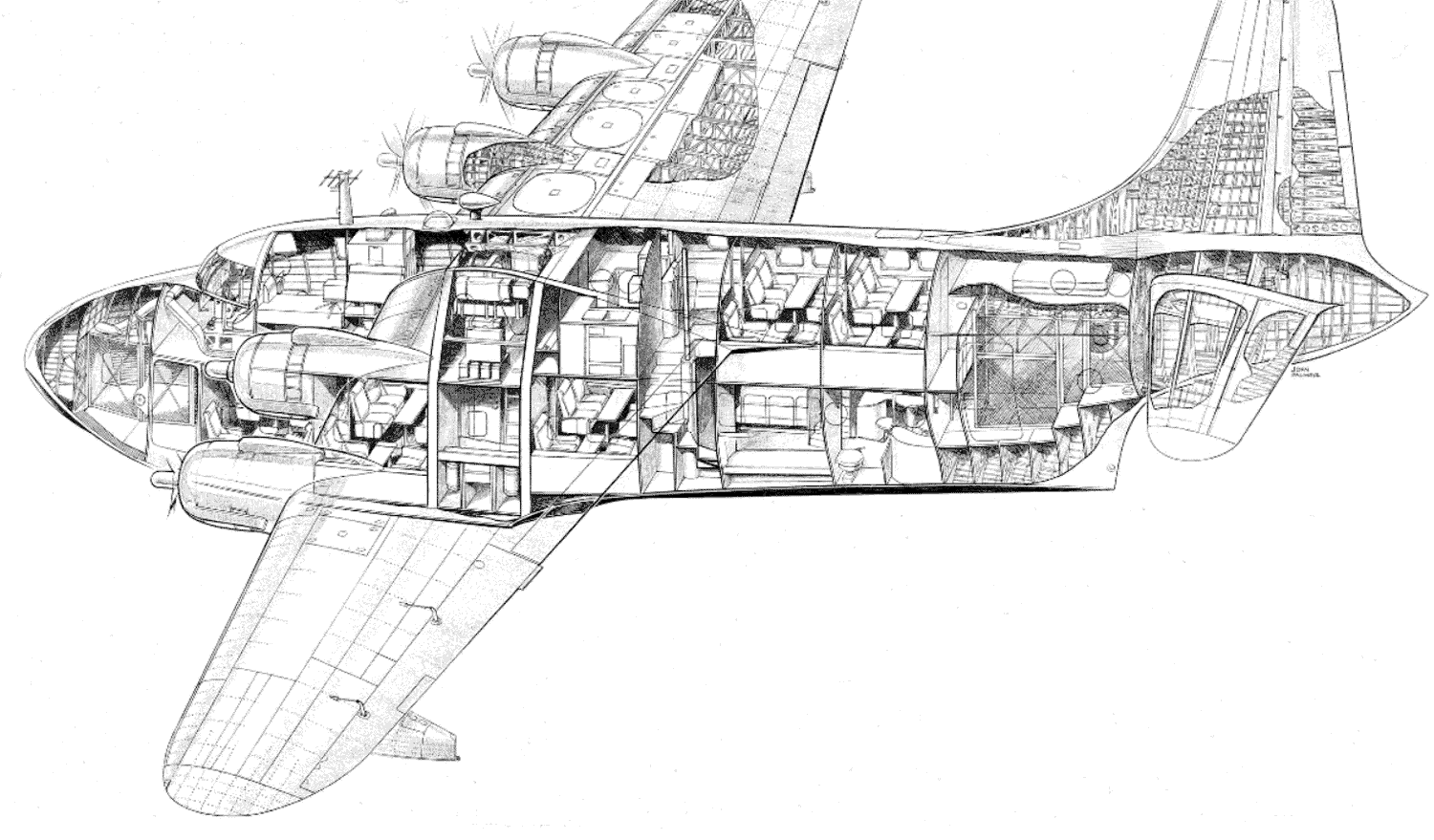- Yes
- No
Short S.45 Seaford GR Mk. I.

Design and service history:
The short S.45 Seaford was a variant of the more familiar Short Sunderland, created in response to Air Department Specification R.8/42. This specification sought for an maritime bomber with more powerful engines, better defensive armaments, along with other enhancements to improve its crew comforts and handling than the aircraft currently in service. Short answered this specification with a modified Sunderland design, hence the Seaford was initially ordered as the “Sunderland Mark IV”.
The standard Sunderland III engines were replaced by Bristol Hercules XIX engines, though the major structural elements of the Seaford remained mostly unchanged from the Mk.III. The only initial changes was the hull was lengthened 3 feet ahead of the wing, and the bottom was extended and redesigned to account for the changes in dimensions. In addition, they also thickened the duralumin skin on the wings and engines. After testing, they increased the keel area by another 20% to improve seafaring stability. The armament was also changed, with the planned armament consisting of two fixed forward-firing .303 inch (7.7 mm) Browning machine guns in the nose, a Brockhouse Engineering nose turret with twin .50 in (12.7 mm) machine guns, twin 20 mm Hispano cannon mounted in a Bristol B.17 dorsal turret, twin .50 in (12.7 mm) guns in a Glenn-Martin tail turret, and another .50 in (12.7 mm) machine gun in a hand-held waist position on each side of the fuselage. All turrets were electrically powered, and a total of two prototypes and thirty production aircraft were ordered from Short as the Sunderland MK.IV, though later it would be redesignated as the S.45 Seaford GR Mk. I after serious tail modifications during the test flights of the first prototype.
The first prototype first flew on the 30th of August 1944, and it was found the increased engine power caused stability problems, resulting in a new and larger tail fin, further increasing the size of the aircraft. With these changes in place, the first production Seaford would not fly until a year later in April of 1945, well after the introduction of the Sunderland Mk.V, meaning it was too late to see service in Europe. In total, eight production Seafords would be completed, but it did not see widespread use, and six of the Seafords would be modified into civilian airliners in Belfast christened the Solent 3, marking an anticlimactic end to the type.
Specification:

General characteristics
Crew: 8–11 (two pilots, radio operator, navigator, engineer, bomb-aimer, three to five gunners)
Length: 88 ft 6+3⁄4 in (26.994 m)
Wingspan: 112 ft 9+1⁄2 in (34.379 m)
Height: 37 ft 3 in (11.35 m)
Wing area: 1,687 sq ft (156.7 m2)
Empty weight: 45,000 lb (20,412 kg)
Gross weight: 75,000 lb (34,019 kg)
Powerplant: 4 × Bristol Hercules XIX 14-cylinder radial engines, 1,720 hp (1,280 kW) each
Performance
Maximum speed: 242 mph (389 km/h, 210 kn) at 500 ft (150 m)
Cruise speed: 207 mph (333 km/h, 180 kn) at 7,000 ft (2,100 m)
Range: 2,800 mi (4,500 km, 2,400 nmi) normal range
3,100 mi (5,000 km; 2,700 nmi) overload range
Service ceiling: 14,000 ft (4,300 m)
Rate of climb: 875 ft/min (4.45 m/s)
Time to altitude: 18 min to 10,000 ft (3,000 m)
Armament
Guns: 6 × .50 in Browning machine guns (two each in nose and tail turrets and two beam guns), 2 x 20 mm Hispano cannon in dorsal turret and 2 × fixed .303 in Browning machine gun
Bombs: 4,960 lb (2,250 kg) of bombs and depth charges
Additional Photographs:





Sources:
- Short Seaford - Wikipedia (Wikipage for the type)
- Short Seaford | Classic Warbirds (Additional info)
- S.45 Seaford - Flying boat - Short (Additional history)
- https://nonplused.org/panos/oam/images/Short_S45_Seaford_A4.pdf (PDF containing history and more info)
